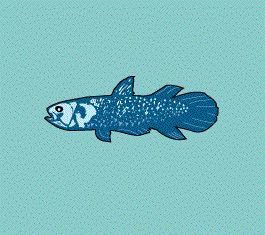Living fossils

A living fossil is a species that closely resembles its fossil ancestors: it is a lineage that has experienced a long period of stasis. A famous example of this is the coelecanth (pictured opposite) - there are fossils over 300 million years old that are very similar to the modern species.
There have been two conjectures about why these groups have changed so little, but no general theory.
Two possible reasons for the existence of living fossils:
• Stabilizing selection Some living fossil species live in relatively isolated habitats, with no apparent competitors; and if their habitats have been stable there will have been no pressure for them to change.
• Absence of genetic variation There is no evidence that living fossils have peculiar genetic systems that might prevent evolutionary change. The amount of protein polymorphism in modern living fossils has been measured by gel electrophoresis and is not noticeably low.
Living fossils are interesting for the following reasons:
• Molecular evolution in living fossils provides a striking example of the independence between molecular and morphological evolution.
• Living fossils such as the lungfish provide valuable information on the rate of evolutionary change.
What can living fossils tell us about molecular evolution?
| Next |



